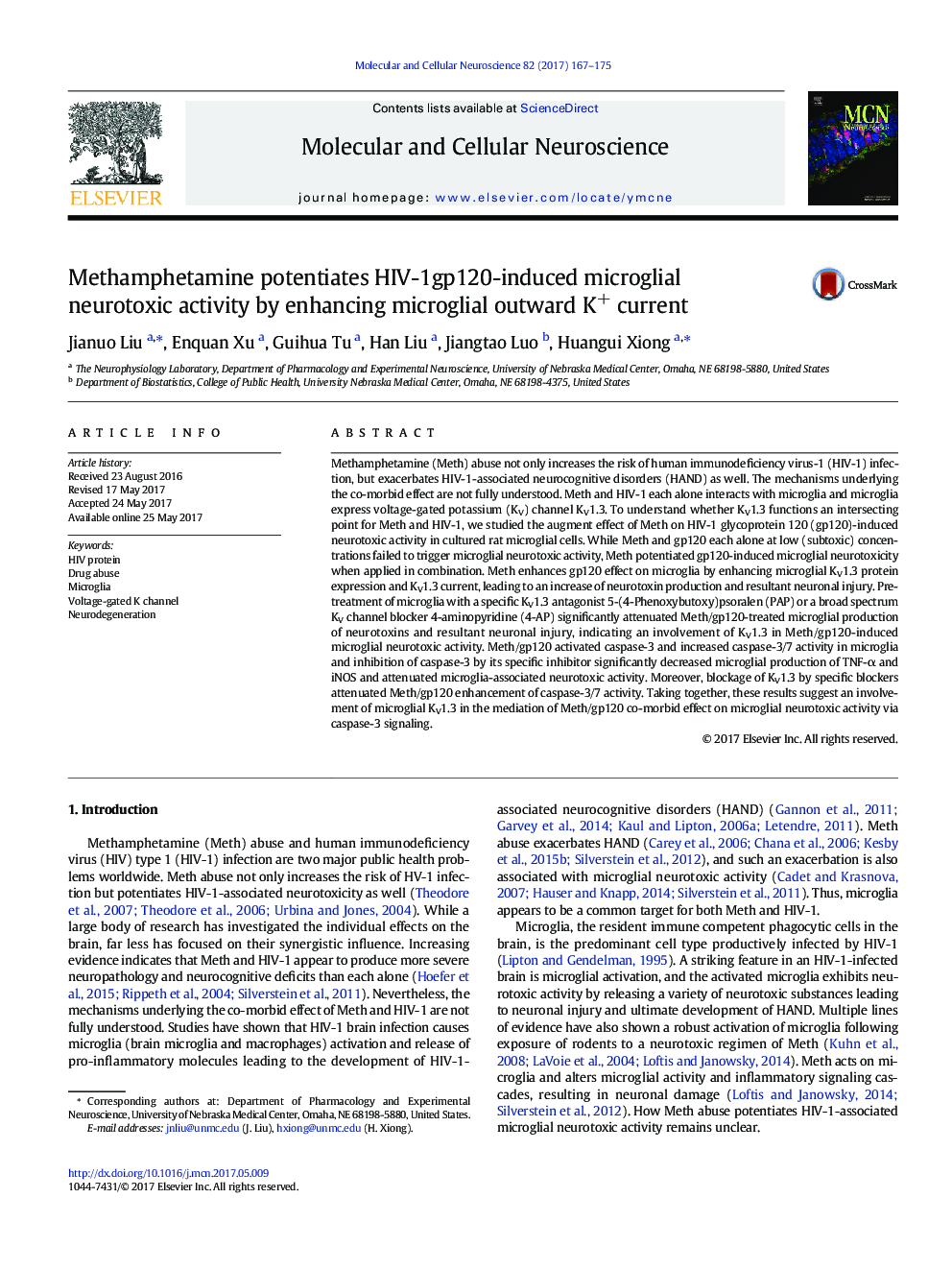| کد مقاله | کد نشریه | سال انتشار | مقاله انگلیسی | نسخه تمام متن |
|---|---|---|---|---|
| 5534356 | 1551124 | 2017 | 9 صفحه PDF | دانلود رایگان |

- Meth potentiates gp120-induced microglial neurotoxic activity.
- Meth potentiation of gp120 effect on microglia via K+ channel KV1.3 and caspase 3/7 signaling
- Present results may imply a potential mechanism for HAND pathogenesis in the era of cART.
Methamphetamine (Meth) abuse not only increases the risk of human immunodeficiency virus-1 (HIV-1) infection, but exacerbates HIV-1-associated neurocognitive disorders (HAND) as well. The mechanisms underlying the co-morbid effect are not fully understood. Meth and HIV-1 each alone interacts with microglia and microglia express voltage-gated potassium (KV) channel KV1.3. To understand whether KV1.3 functions an intersecting point for Meth and HIV-1, we studied the augment effect of Meth on HIV-1 glycoprotein 120 (gp120)-induced neurotoxic activity in cultured rat microglial cells. While Meth and gp120 each alone at low (subtoxic) concentrations failed to trigger microglial neurotoxic activity, Meth potentiated gp120-induced microglial neurotoxicity when applied in combination. Meth enhances gp120 effect on microglia by enhancing microglial KV1.3 protein expression and KV1.3 current, leading to an increase of neurotoxin production and resultant neuronal injury. Pretreatment of microglia with a specific KV1.3 antagonist 5-(4-Phenoxybutoxy)psoralen (PAP) or a broad spectrum KV channel blocker 4-aminopyridine (4-AP) significantly attenuated Meth/gp120-treated microglial production of neurotoxins and resultant neuronal injury, indicating an involvement of KV1.3 in Meth/gp120-induced microglial neurotoxic activity. Meth/gp120 activated caspase-3 and increased caspase-3/7 activity in microglia and inhibition of caspase-3 by its specific inhibitor significantly decreased microglial production of TNF-α and iNOS and attenuated microglia-associated neurotoxic activity. Moreover, blockage of KV1.3 by specific blockers attenuated Meth/gp120 enhancement of caspase-3/7 activity. Taking together, these results suggest an involvement of microglial KV1.3 in the mediation of Meth/gp120 co-morbid effect on microglial neurotoxic activity via caspase-3 signaling.
Journal: Molecular and Cellular Neuroscience - Volume 82, July 2017, Pages 167-175